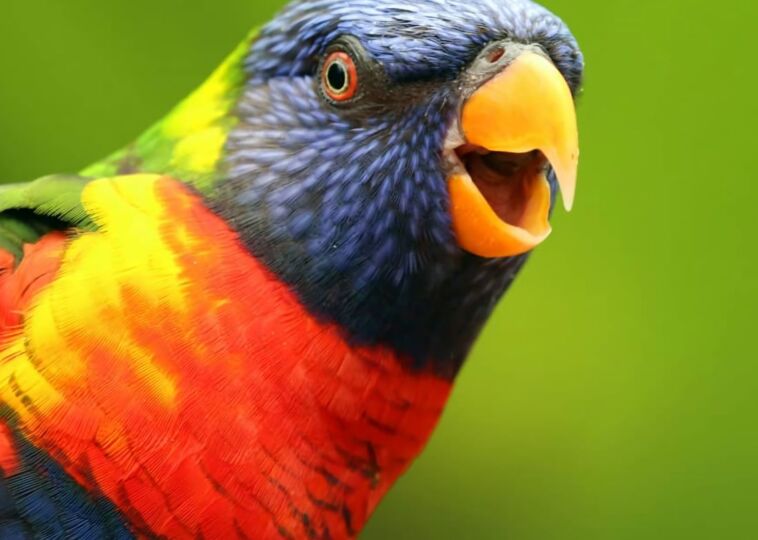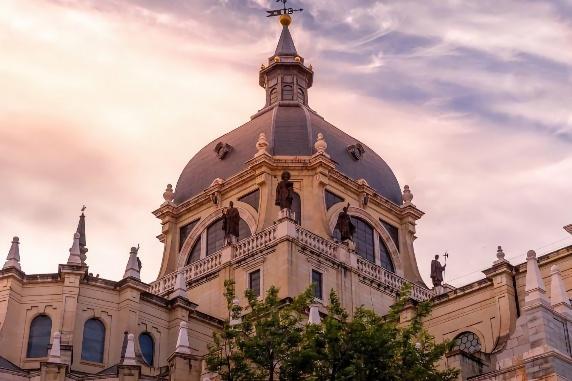Bird Colors So Bright, You Won’t Believe Your Eyes!

Contents [hide]
Birds are among the most dazzling creatures in the animal kingdom. Their colors can be so stunningly bright and varied that they almost seem unreal. But why do these birds flaunt such vibrant plumage? Their colors are critical to their survival, behavior, and communication. Brightly colored feathers are often a powerful defense mechanism.
In the wild, color can serve as a warning to predators that these birds might. Sometimes, bright hues indicate toxicity or lousy taste as a visual deterrent. On the other hand, bold colors can also attract mates and showcase health, vitality, and genetic fitness.
Kingfisher

With its vivid plumage of deep orange, cyan, and electric blue, a Kingfisher in flight is like a bolt of living color across the water. But what makes its colors truly fascinating is While the Kingfisher’s brilliant blues might seem like the result of rich pigments, the truth is far more intriguing.
In reality, the blue feathers down the back of a Kingfisher are brown. This phenomenon, known as structural coloration, gives the Kingfisher its iconic blue hue. The Kingfisher’s feathers are made up of microscopic structures, spongy nanostructures, that interact with light.
Peacock

Peacocks, known for their breathtaking plumage, belong to the pheasant family and are perhaps the most iconic examples of avian beauty. Peacock feathers vary significantly between species, showcasing a unique range of colors and patterns that set them apart.
For example, the Indian Peacock, the most recognized peafowl species, is distinguished by its striking blue head and neck, which can appear almost metallic in the sunlight. The females, known as Indian Peahens, contrast sharply with their male counterparts; they are predominantly brown.
Crimson Rosella

Crimson Rosellas are one of Australia’s most visually striking parrot species, known for their brilliant array of colors that span from deep crimson to fiery orange and even sunny yellow. These variations in plumage make the Crimson Rosella a bird of endless fascination for bird watchers and nature enthusiasts alike.
Their vivid hues What makes Crimson Rosellas particularly interesting is their genetic diversity. When red and yellow Rosellas interbreed, the offspring often sport a unique blend of both parents’ hues, creating a stunning orange plumage. This phenomenon shows how dynamic and unpredictable nature can be, presenting a living palette that varies from bird to bird.
Mandarin Duck

The Mandarin Duck isn’t just a bird; it’s a living work of art. During courtship, Mandarin Ducks engage in a mesmerizing, graceful, captivating routine. This unique courtship behavior showcases the Mandarin Duck’s commitment to finding a lifelong partner. Mandarin Ducks have become symbolic of love, fidelity, and commitment.
In many cultures, they are affectionately called love ducks because they can attract and enhance love. It is a common practice in some parts of Asia to keep a sculpture or painting of Mandarin Ducks at home to symbolize and invite marital harmony and lasting love.
Toucan

The Toucan is more than just a bird with a quirky appearance; it’s a marvel of nature’s ingenuity. Known worldwide for its oversized, vividly colored beak, the Toucan has become an iconic symbol of the lush rainforests it inhabits. While they are primarily black in body color, Toucans are rarely just blackbirds.
These colors, coupled with their large beaks, make them stand out in the dense greenery of the rainforest. Often seen as an exaggerated feature, the beak is a multipurpose tool crucial to the Toucan’s survival and social interactions. Toucans tuck their beaks under their feathers during colder nights to conserve heat.
Spangled Cotinga

The Spangled Cotinga is a mesmerizing marvel of the avian world, found nestled in the dense tropical rainforests of Central and South America. Known for their dazzling array of colors and unique physical traits, these birds are like the rock stars of the canopy, flaunting a range of vibrant hues that are sure to catch the eye.
These striking birds are The Spangled Cotinga, along with other members of its family like the Andean Cock-of-the-Rock, Turquoise Cotinga, and Banded Cotinga, have evolved an impressive spectrum of bright colors primarily for sexual selection. The Spangled Cotinga is also known for its quirky and distinctive physical features.
Gouldian Finch

The Gouldian Finch, often dubbed the Rainbow Finch, is one of the most vividly colored birds in the world. Unlike many bird species where males and females have distinctly different plumages, male and female Gouldian Finches share the same color distribution.
This difference in vibrancy plays a significant role in mate selection, where females are drawn to males with the most vivid and striking colors. But what makes these colors so vibrant and varied? For the Gouldian Finch, being brightly colored isn’t just about looking pretty; it’s a matter of survival and reproduction.
Quetzal

Resplendent Quetzal, a medium-sized bird species, is Native to the cloud forests of Central America; the Quetzal is revered. The male Quetzal is the true star of the show; with a body covered in iridescent metallic green or blue feathers that shimmer in the sunlight, it creates a spectacle of colors that can change depending on the angle of light.
Adding to its allure, a distinctive tuft of golden-green feathers forms a crest atop its head, giving it a regal appearance. However, the most distinguishing feature of the male Quetzal is its twin tail feathers, which can grow up to a meter in length. These elongated feathers, flowing gracefully behind it in flight, give the Quetzal an almost mythical presence.
Lilac-breasted Roller

The Lilac-Breasted Roller doesn’t just flaunt a rainbow of colors; it wears them with pride. During these displays, the bird’s vibrant colors create a dazzling spectacle that catches the eye of potential mates and rivals alike. The Lilac-Breasted Roller is more than just a pretty face.
It’s renowned for its acrobatic aerial performances during the breeding season. Picture this: a bird soaring through the sky, executing intricate loops and dives while showing off its vibrant feathers in a breathtaking aerial display. This performance is not just a visual feast; it’s a crucial part of courtship, showcasing the bird’s agility and vitality.
Scarlet Macaw

These magnificent birds aren’t just showstoppers; their vibrant colors are crucial to their survival strategy. The brilliant hues of a scarlet macaw are more than just eye candy; they are an essential part of their defense mechanism. The term disruptive coloration perfectly captures the essence of the scarlet macaw’s feathers.
When a scarlet macaw flutters through the rainforest canopy, its riot of colors creates a dynamic visual distraction, scarlet macaws are native to the lush rainforests of Central and South America, where their vivid colors can both blend in with and stand out from the dense vegetation.


